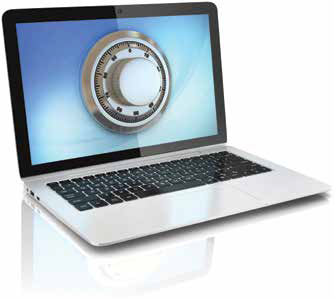They Said It

The first and most important step toward responsible technology use is to understand the basics of data security. This should be required curriculum for all teachers. Below are some steps teachers can take to better protect their data:
1. Install software updates on a frequent and regular basis. Most major software companies work diligently to keep your data safe and secure by releasing updates to the code they’ve produced. These software patches address known vulnerabilities, but can only work when installed by you or your IT support team.
2. Routinely implement both strong and unique passwords. A strong password—or passphrase—contains a complex (preferably irregular) combination of uppercase and lowercase letters, numbers, and other symbols; the more characters, the better. The How Secure Is My Password website can help. Alternatively, unique passwords vary from website to website. Using passwords that are both strong and unique is critical. Invariably, even the strongest passwords become weak when used everywhere for everything.
3. Use a password manager on every device. Password management software facilitates the use of strong and unique passwords for expert and novice users alike. Products like 1Password, Dashlane, and LastPass make creating unique and strong passwords a snap, and effortlessly sync your login credentials across Windows, Macintosh, and mobile devices.
4. Learn to spot phishing—your bank account depends upon it. Phishing is the activity of defrauding an online account holder of financial or other confidential information by posing as a legitimate company. Phishing attempts now occur using email, social networking, telephone and other communications, but tell-tale signs often exist. Learn to spot these signs well, and approach unsolicited communication with caution. If it appears too good to be true, it probably is.
5. Make two-factor authentication a habit. If you’re really serious about security, then it’s probably time. Two-factor authentication, or 2FA as it’s commonly abbreviated, adds an extra step to your basic login procedure. Increasing in popularity and now built into a wide range of online systems, this extra step combines something you know with something you have to reliably verify your identity. Because passwords can be stolen, cracked, leaked, guessed, bought, phished, sniffed—or maybe even read from the sticky on your desk—2FA will increase your safety immensely.
Darren Draper is the Director of Education Technology for the Canyons School District in Sandy, UT.
Tools and ideas to transform education. Sign up below.
